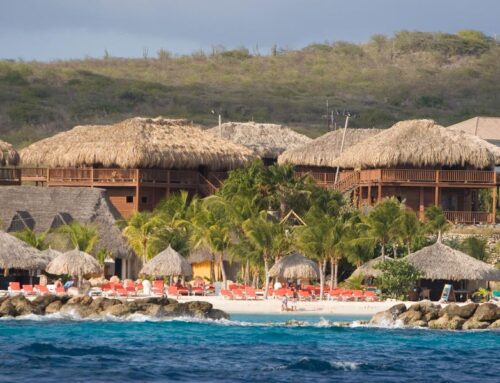Latest Kotek climate order aims to speed up Oregon’s clean energy transition
November 20, 2025
Gov. Tina Kotek has issued another broad climate executive order directing state agencies to take specific actions to reduce greenhouse gas emissions and speed up Oregon’s move to carbon-free electricity.
Her order Wednesday seeks to accelerate wind and solar energy and energy storage by streamlining land use and environmental reviews, siting, permitting and grid connections.
It sets an energy storage goal and directs agencies to prioritize public-private partnerships for clean energy projects and to find ways to support emerging technologies such as enhanced geothermal technology, offshore wind and advanced battery storage.
The order also calls for state agencies to increase energy efficiency in public and private buildings and extends Oregon’s Clean Fuels Program through 2040. The program requires suppliers to steadily cut fuel pollution.
“The rising cost of living is hitting Oregonians household budgets hard, so we must act effectively and prudently to protect ratepayers from increased energy costs, while also building a more resilient, clean energy future,” Kotek said at a press conference at the state Capitol while flanked by a group of clean energy and climate action supporters.
Kotek’s move comes amid growing doubts about Oregon’s ability to hit its ambitious 100% clean energy target. State law requires investor-owned utilities in Oregon to reduce emissions by 80% by 2030 and to transition to all clean electricity by 2040, something experts say utilities are unlikely to do given the lack of transmission lines and the extraordinary growth in electricity demand from data centers, buildings and cars.
The order also lands as the Trump administration has moved aggressively to roll back federal climate policies, reversing many emissions-reduction measures enacted under President Joe Biden – including halting wind and solar projects on federal lands and dismantling generous tax credits funded by the Biden-era Inflation Reduction Act.
It’s Kotek’s third climate-related executive order in less than a month.
At the end of October, she directed state agencies to harness the potential of forests, farms, wetlands and waterways to reduce emissions, preserve wildlife habitat and help communities withstand the threat of climate change.
And in early October, she pushed to streamline and accelerate the pace of wind and solar project development in the state before the clock runs out on federal clean energy tax credits.
Kotek said the latest executive order can help slow climate change, expand transmission grid capacity, attract new businesses and create economic opportunities across Oregon’s energy sector.
Its directives mirror those outlined in the Oregon Energy Strategy, a comprehensive roadmap for meeting Oregon’s clean energy goals released by the state’s Department of Energy last month.
Kotek’s order sets a goal of 8 gigawatts of energy storage in Oregon by 2045. Building more energy storage is key, the governor’s office said, because it provides backup electricity when wind or solar power production is low and during outages or peak demand periods. Energy storage projects also reduce the need for building additional electricity-generating resources such as wind or solar projects.
Eight gigawatts is achievable, the governor’s office said, because the state already has nearly 500 megawatts of energy storage and more than 7 gigawatts of storage projects are currently planned for development.
The order also directs the state Department of Energy to designate transmission corridors, including on public land, and streamline siting and approval in those corridors or in existing rights of way.
The order requires a 50% reduction in carbon intensity of Oregon fuels by 2040. The current rule requires a 10% reduction in average carbon intensity from 2015 levels by 2025, followed by a 20% reduction by 2030 and 37% by 2035. Most fuel producers mix in cleaner fuels such as ethanol, biodiesel or renewable diesel into traditional gasoline and diesel or buy credits from others who have gone beyond the state requirement.
In 2024, the Clean Fuels Program led to the reduction of approximately 3 million metric tons of greenhouse gases. Over the lifetime of the program, since 2016, approximately 14.6 million metric tons of greenhouse gases have been reduced.
Much of the order focuses on state agencies – including the Department of Energy, the Department of Land Conservation and Development, Department of Environmental Quality and the Public Utility Commission – aligning their decisions, investments and activities, including the implementation of existing programs, to advance clean energy, clean fuels and energy efficiency.
It doesn’t entail new programs or additional funding for the remainder of the 2025-2027 biennium but may lead to new funding demands in future years, said Kotek spokesperson Anca Matica.
The order directs agencies to tally the barriers to clean energy permitting, construction and connecting into the transmission grid and come up with solutions by next fall. The agencies are to focus on projects that benefit Oregon ratepayers and that involve upgrades to the existing grid and transmission expansion in existing rights-of-way.
By September 2026, agencies are to identify strategies to streamline and accelerate the construction of wind and solar projects. Agencies must provide quarterly updates on progress in advancing public-private partnerships.
“We simply have to do everything we can with the resources we have as effectively and efficiently as possible,” Kotek said at the press conference.
The governor’s office said the order won’t raise rates. Rather, the order directs agencies to prioritize energy efficiency and investments that deliver the greatest value to ratepayers, the governor’s office said.
Climate and clean energy advocates praised the order.
“We are especially encouraged to see the governor call for stronger alignment between Oregon’s clean energy goals and state energy actions,” said Nicole Hughes, executive director of Renewable Northwest, a nonprofit that advocates for more rapid clean energy development in the region. “There are meaningful efficiencies to be found in siting and permitting regulations and we are eager to support agencies as they implement streamlining measures.”
Nora Apter, the Oregon director at Climate Solutions, a Northwest-based nonprofit that advocates for clean energy to slow global warming, was even more enthusiastic.
“We can and must achieve our 100% clean electricity goals, and this order provides the momentum and focus needed to get there,” Apter said.
Reporter Carlos Fuentes contributed to this story.
If you purchase a product or register for an account through a link on our site, we may receive compensation. By using this site, you consent to our User Agreement and agree that your clicks, interactions, and personal information may be collected, recorded, and/or stored by us and social media and other third-party partners in accordance with our Privacy Policy.
Search
RECENT PRESS RELEASES
Related Post



